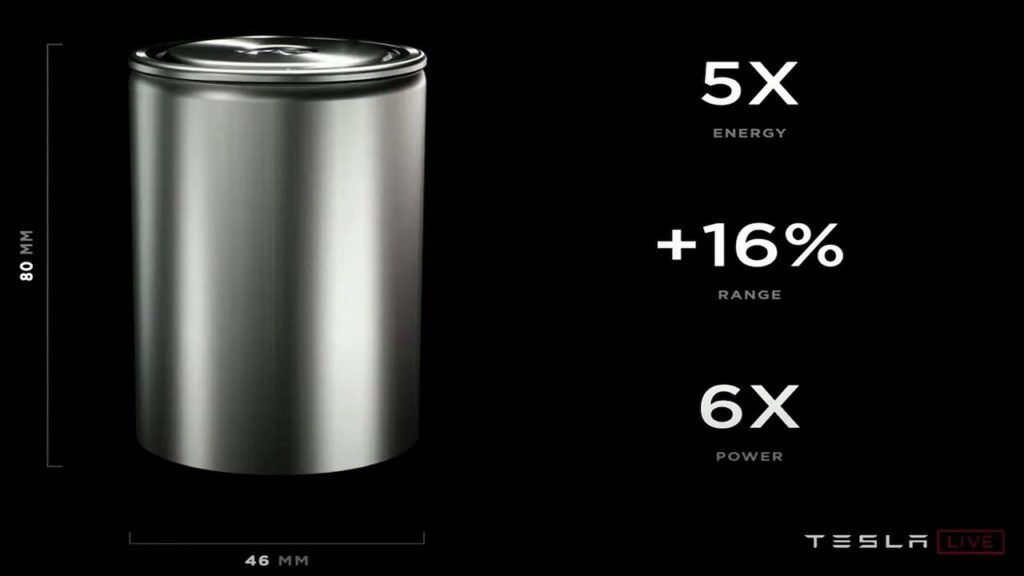The Tesla 4680 battery and BYD Blade battery are two of the most technologically advanced options for EVs out there and various carmakers around the world use these.
Tesla 4680 and BYD Blade battery are competing to outperform each other with distinctive features. The electric car scenario is playing out quite aggressively across the globe. Tesla is the biggest auto giant in the space, while the BYD is an upcoming worthy Chinese competitor.
Tesla might have taken a lead in comparison to everyone, but the EV market is still in its nascent stage and there are myriad modern players and startups coming up. Not to mention, the traditional carmakers have been relentlessly working to upgrade themselves to adopt the inevitable. In this post, we shall take a deep dive into the comparison between Tesla’s battery (the upcoming 4680) and BYD’s popular Blade battery.
You might also like: Is Electric Car Battery Safe, Fireproof, Waterproof and Short Circuit Proof?
Tesla Battery (4680)
Tesla is currently using NCA (Nickel-Cobalt-Aluminium) battery chemistry to power its range of products in North America. The battery cells are being produced by Panasonic in Tesla’s Gigafactory in Nevada. However, to keep the costs in check and reduce the use of Cobalt and Nickel, it is planning to switch to LFP (Lithium-Iron (Ferrous)-Phosphate) chemistry that powers Teslas in the Chinese, European and Asian markets already. There are quite a few benefits associated with LFP batteries.

Benefits of using LFP Batteries
This includes things like being much safer in terms of stability and explosiveness, reduction in the use of Cobalt and Nickel that are generally produced unethically, having environmental issues for being less recycle-friendly, and being much cheaper than the NCA or NMC (Nickel-Manganese-Cobalt), no issues with overcharging even in the long run.
Cons of LFP Batteries
The only downside is the less energy density. This translates to a lower range even with the same weight and packaging specifications. But Tesla has been infamous for changing the prices of its products in the U.S. frequently. Switching to LPF batteries would ensure better profit margins for the company.
You might also like: What Is Vehicle To Load (V2L) & Which EVs Have This Feature?
Tesla 4680 Battery Cells
Back in 2020, Tesla had also announced a unique technology known as the 4680 battery cells. 4680 is derived from the dimensions of the cells; 46 mm x 80 mm. These dimensions are larger than the 2170 cells that Tesla uses in its vehicles currently. However, the upgradation to the beefier battery cells will bring additional benefits including a 16% increase in range, 5x more energy capacity, and a 14% reduction in cost per kWh.
While these may be tall claims, the implementation is rather complicated. It was announced back in 2020 but the production hurdles and other issues have prevented it from actually being present in the cars today. We shall have to wait a bit longer to experience the 4680 battery cells in production cars.
BYD Blade Battery
The Chinese EV giant, BYD has stormed into the market with a ton of impressive products already, beginning to capture the international markets. EVs like BYD Han and Tang are already establishing a loyal customer base for themselves in the international markets. However, BYD’s Blade battery has gained tremendous traction from industry experts and customers alike. The Blade battery also uses the LFP chemistry but there are some unique and trademark features that set it apart from the regular LFP batteries that most manufacturers use.

Features of BYD Batteries
BYD implements its 26 years of experience in battery development to come up with this innovative technology. It has been using the Blade battery in its electric cars since last year (2021). The cells of this battery are large in size having a higher capacity than the regular cells. LFP cells, in general, don’t produce oxygen as the by-product of the reaction making them much safer and fireproof.
The battery cells are arranged in such a way that it creates a mechanical disconnect between the cells so that even in case of an emergency or unfortunate scenario, the cells don’t propagate fire. There is no need to create modules for cells making the battery packaging efficient.
Nail Penetration Test
A significant testament to the safety of the Blade battery could be established using the Nail Penetration Test, which is the standard test to determine to quality, safety and strength of a battery. As the name suggests, a nail is penetrated through the surface of the battery. In this test, it was recorded that the battery neither emitted neither smoke, nor fire, and the surface temperature only reached 30 to 60-degree Celsius.
The regular LFP battery, in the same test, reached temperatures upto 200 to 400-degree Celsius but didn’t catch fire. Under extreme test conditions, like being crushed, bent, heated in a furnace at 300-degree Celsius and overcharge by 260%, didn’t cause the battery to catch fire.
Many major carmakers in the world are approaching BYD to use the Blade Battery in their cars to enjoy the price benefits associated with it. More importantly, the safety and recycling nature of these cells makes it an enticing proposition for the mass-market entry-level electric cars in various global markets. Hence, Tesla and BYD Blade battery setups make for an enticing proposition with distinct pros and cons.
You might also like: Are Electric Car Chargers Universal – Types of Chargers
